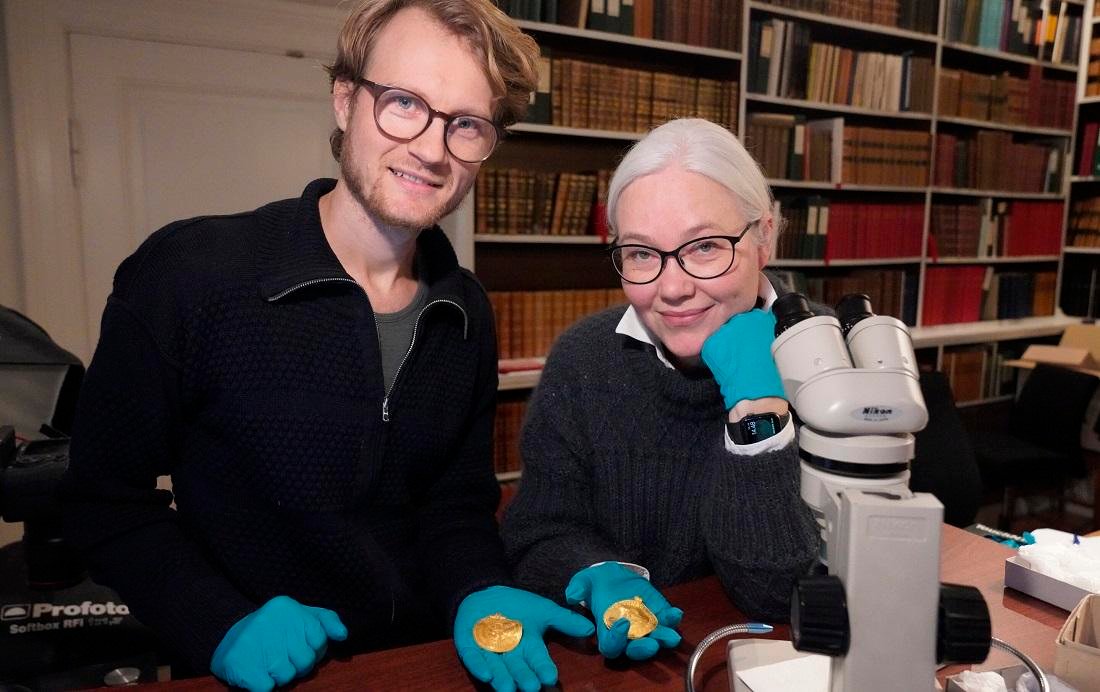Scandinavian researchers have found the first known written mention of the Norse god Odin on an ancient gold disc that was unearthed in southern Denmark.

The gold disc, which dates to the 400s AD, was discovered in 2020 in Vindelev, central Denmark, alongside a cache of Roman coins that had been reworked into jewelry.
Before researchers could study it, it was displayed to the public at a museum near to the discovery site, according to NBC News.
The golden bracteate carried an inscription that read: “He is Odin’s man”, likely referring to an unidentified ruler or overlord.

“This is the smoking gun for Odin’s presence in Scandinavia as early as the 5th century,” Simon Nygaard, an assistant professor in pre-Christian Nordic religion at Aarhus University in Denmark, told NBC News. “In the proper sense of the word, it’s historic.”
Lisbeth Imer, a runologist with the National Museum in Copenhagen, said the inscription represented the first solid evidence of Odin being worshipped as early as the 5th century —at least 150 years earlier than the earliest reference previously identified, which was on a brooch discovered in southern Germany and dated to the second half of the 6th century.
Every runic inscription, according to specialist in ancient languages Krister Vasshus, “is vital to how we comprehend the past” because they are rare.
Vasshus remarked: “When an inscription of this length appears, that in itself is amazing. It gives us some quite interesting information about religion in the past, which also tells us something about society in the past.”
Odin is one of the main gods in Norse mythology, a pre-Christian paganism central to Viking society. He was frequently associated with war and poetry.


























